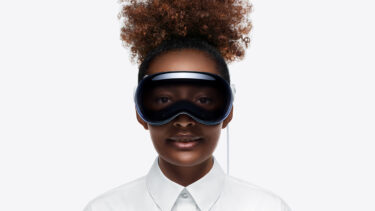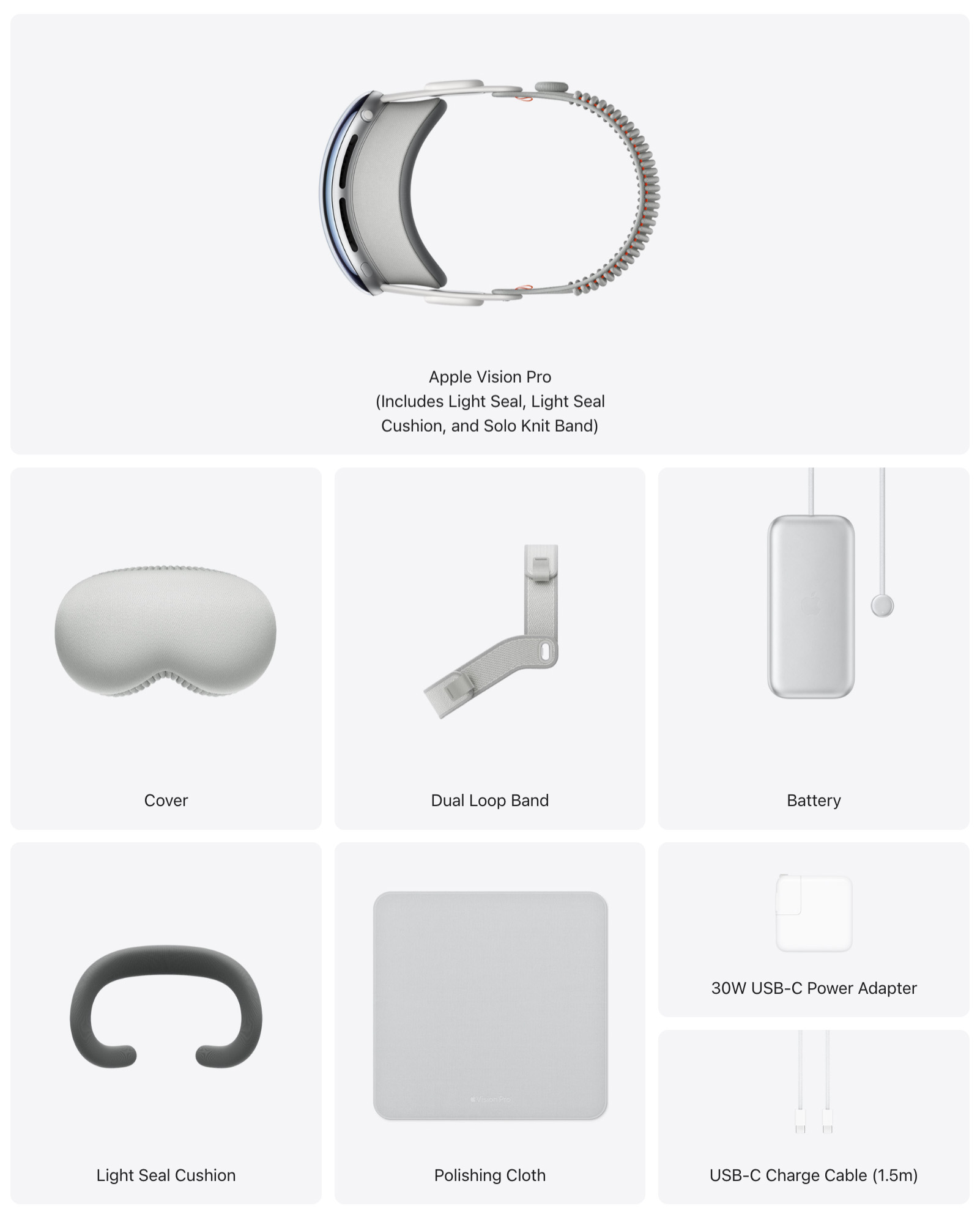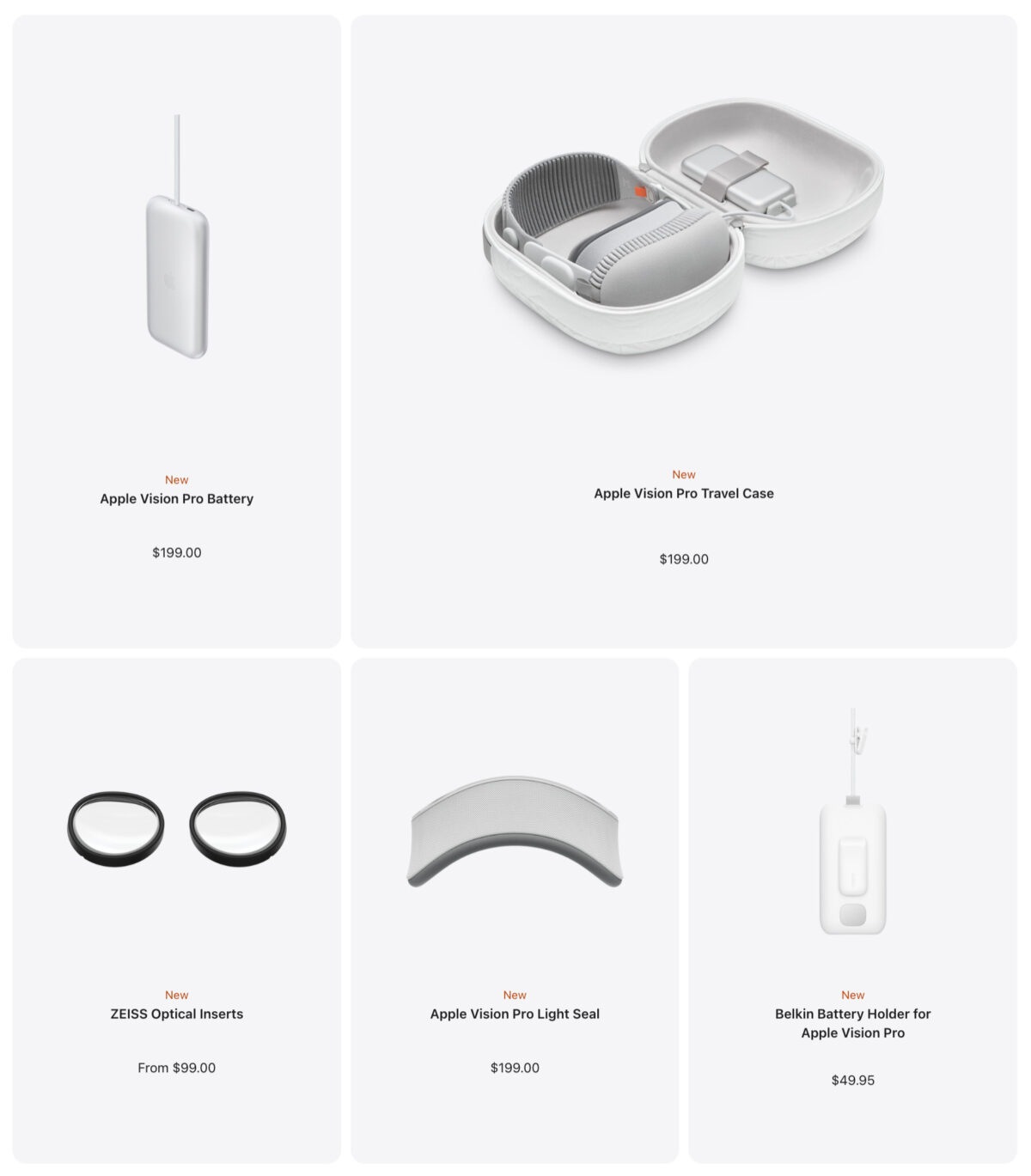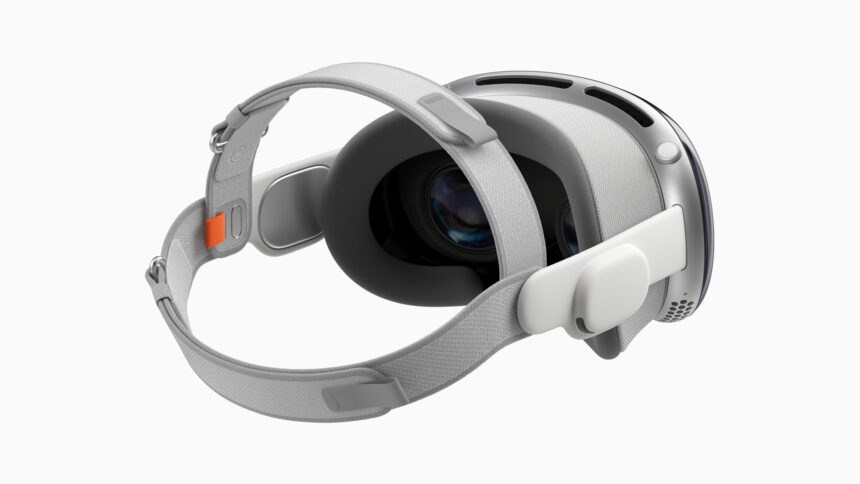Apple Vision Pro: Price, specs, features & everything you need to know

Vision Pro is Apple's first spatial computer. This article answers some of the most common questions about it.
Launched in the U.S. on February 2, the Vision Pro is Apple's first dedicated hardware for virtual reality and augmented reality.
Apple avoids these terms, referring instead to "spatial computing", but the meaning is the same. We are talking about devices worn on the face that display digital content in varying degrees of immersion in your field of vision. When this content completely replaces the physical environment, it is generally called virtual reality; when it augments the environment, it is called augmented reality.
Content
What are the specs of Vision Pro?
The most important specifications of the device are listed below:
- Display: Micro-OLED displays with 23 million pixels (according to iFixit 3,660 x 3,200 pixels per eye)
- Frame rate: 90Hz, 96Hz, 100Hz
- Chips and RAM:
- M2 variant with 8-core CPU and 10-core GPU, 16 GB RAM
- R1 chip with 12‑millisecond photon‑to‑photon latency and 256 GB/s memory bandwidth
- Cameras: 2 x 6.5 megapixels (for passthrough and spatial photos & videos)
- Sensors:
- 2 high-resolution main cameras
- 6 tracking cameras
- 4 eye-tracking cameras
- TrueDepth camera
- LIDAR scanner
- 4 IMUs
- Flicker sensor
- Ambient light sensor
- Audio:
- Spatial audio with dynamic head tracking
- Personalized Spatial Audio and audio ray tracing
- 6 microphones
- Ultra‑low‑latency connection to AirPods Pro (2nd generation) with MagSafe Charging Case (USB‑C)
- Battery:
- Tethered external battery
- Battery life: up to 2 hours for general use and up to 2.5 hours for video playback
- Connection:
- Wi-Fi 6 (802.11ax)
- Bluetooth 5.3
- Operating system: visionOS
- Input:
- Standard: Hands, Eyes, Voice
- Accessories: Keyboards, Trackpads, Game Controllers
- Supported IPDs (pupil distances): 51 to 75 millimeters
- Weight:
- Headset: 600 to 650 g (depending on Light Seal and head band configuration)
- External battery: 353 grams
If you want to dig deeper, check out Brad Lynch's technical analysis of the hardware on YouTube.
What makes Vision Pro special compared to other VR headsets?
Other standalone headsets, like Meta Quest, excel at gaming, fitness, and social apps.
With Vision Pro, Apple is pursuing a different, more fundamental goal: to create a standalone general-purpose computer that fits seamlessly into the Apple ecosystem and displays content spatially. This is why Apple refers to its own product as a spatial computer.
Technically, it is a VR headset that uses cameras to capture the physical environment and display it on opaque screens. This gives the user the approximate feeling of having their real environment in front of them. This technology is called passthrough and is also used by other VR headsets such as Meta Quest 3.
Once the environment has been recreated in the headset, it can be augmented or replaced with digital elements. Users can write emails and use the browser in floating windows, project a virtual movie screen into the room, or immerse themselves in fully immersive environments. The level of immersion can be adjusted at any time using the Digital Crown on the headset, allowing users to seamlessly switch between passthrough and fully-immersive VR.
In addition to this ability, Vision Pro has several other features that no other VR headset offers in early 2024.
I will discuss these in the following sections.
Cutting-edge displays
Vision Pro is one of the first commercial VR headsets to use micro-OLED displays. This type of display is made using silicon wafers instead of glass, which has a number of advantages.
Micro-OLED displays outperform the LCD displays used in almost every VR headset in terms of contrast, pixel density, and brightness, and can be very small, allowing for more compact headsets. Vision Pro's displays are the size of a postage stamp and a single pixel is 7.5 microns in diameter, the size of a red blood cell. As a result, individual pixels and their gaps are no longer visible.
With a resolution of 3,660 x 3,200 pixels, Vision Pro's micro-OLED displays also outperform any other commercially available VR headset.
For comparison: Meta Quest 3 offers 2,064 by 2,208 pixels and Bigscreen Beyond offers 2,560 by 2,560 pixels per eye.
A new level of performance for standalone headsets
Vision Pro uses two chips: the Apple M2 used in current MacBooks and iPad Pros, and the new R1 chip.
The M2 version of Vision Pro has 8 CPU cores, 10 GPU cores, and access to 16GB of RAM. This laptop-grade processor makes Vision Pro significantly more powerful than any other standalone VR headset.
However, the chip's high power consumption is one of the reasons Apple was forced to use a larger battery and outsource it rather than build it into the headset.
Vision Pro has 12 cameras and 5 sensors built in, and the R1 chip is solely responsible for processing camera and sensor data.
A new input paradigm
Most VR headsets use VR controllers as standard input. Vision Pro ditches the controllers and uses only your eyes, hands, and voice for more natural and intuitive input.
Vision Pro's eye tracking detects what the eye is focused on, and hand tracking detects gestures and interprets them as input. The eye becomes an invisible cursor and the hands a natural input device.
Using eye and hand tracking as a means of input is nothing new, but using it as the primary input is unusual for a VR headset.
A spatial operating system and tight ecosystem integration
Apple Vision Pro uses a new operating system called visionOS, which is designed to support new input methods and spatial content.
The operating system is based on iPadOS and is compatible with iPhone and iPad apps, making more than one million apps available on Vision Pro at launch.
The headset is also well integrated into the Apple ecosystem in other ways: Thanks to iCloud support, photos and videos taken with an iPhone are instantly available for viewing on Vision Pro, and MacBook users can view their content on a virtual display of any size that can be placed anywhere in the room.
External display (EyeSight)
One of the most unusual innovations Vision Pro introduces is a feature called EyeSight, which shows the user's eyes on a 3D display. Apple wants to enable eye contact with the outside world and break the social isolation that can come with using VR headsets.
When you are immersed in immersive content, a bluish mist appears on the 3D display. Only when someone approaches you does the fog lift and your eyes become visible. Conversely, users see the real person appearing in the immersive environment.
Read my article on EyeSight and iFixit's teardown to find out more about this feature.
Personas
Persona is Apple's term for avatars. Vision Pro can digitize a person's face using facial scanning and then animate it in real time using built-in eye and face tracking. This allows users to participate in FaceTime conferences with Vision Pro on their face.
This feature is in beta at the time of Vision Pro's launch.
A 3D camera and playback device in one
Vision Pro is the first VR headset designed to capture and play back stereoscopic video and photos. Apple calls these immersive formats, which capture and play back memories with amazing depth, Spatial Videos and Spatial Photos. Alternatively, you can shoot Spatial Videos with an iPhone 15 Pro (Max).
Vision Pro is no longer required to view these formats: Meta Quest now natively supports Spatial Video playback.
What apps and games are available for Vision Pro?
Vision Pro has launched with more than one million compatible iPad and iOS apps and 600 native apps. The latter include the following apps from Apple and third-party providers:
Apple:
- Keynote
- Messages
- Music
- Notes
- Photos
- Safari
- Apple TV
Streaming
- Amazon Prime Video
- Discovery+
- Disney+
- IMAX
- Max
- Paramount+
- Peacock
- Pluto TV
Productivity
- Cisco Webex
- Microsoft 365: Excel, Word, Powerpoint
- Microsoft Teams
- Slack
- Zoom
Sports
- ESPN
- MLB
- NBA
- PGA TOUR
- Red Bull TV
- Sling TV
Others
- Discord
- JigSpace
- Telegram
- TikTok
For a list of the first native Vision Pro games, follow the link.
A number of prominent apps were missing at launch, including Netflix, YouTube, Spotify, as well as Facebook, Instagram, and Whatsapp. However, it is possible that Vision Pro versions of these apps will be released at a later date.
What is included with Vision Pro?
The box includes:
- The headset, including the Light Seal, cushion and Solo Knit Band
- Dual Loop Band (alternative headband)
- An alternative Light Seal cushion
- Battery
- A protective cover for the glass front
- Polishing cloth
- 30W USB‑C Power Adapter
- USB‑C Charge Cable (1.5m)

The Vision Pro box contents at a glance. | Image: Apple
If you would like to watch an unboxing video of Vision Pro, we recommend the one by Youtuber Marques Brownlee.
What accessories are available for Vision Pro?
The following accessories and spare parts are available for Vision Pro:
- Apple Vision Pro Battery for $200
- Apple Vision Pro Travel Case for $200
- Apple Vision Pro Light Seal for $200
- Apple Vision Pro Light Seal Cushion for $30
- Apple Vision Pro Solo Knit Band for $100
- Apple Vision Pro Dual Loop Band for $100
- Zeiss Optical Inserts from $100
- Belkin Battery Holder for Apple Vision Pro for $50
- 240-watt USB-C charging cable (2 meters) for $30
- 30-watt USB-C power adapter for $40 US

The most important accessories for Vision Pro at a glance. | Image: Apple
How heavy is Vision Pro?
Vision Pro weighs between 600 and 650 grams (depending on the light seal and headband configuration), putting it at the upper end of the VR headset weight scale:
- Bigscreen Beyond: 127 grams
- Meta Quest 2: 503 grams
- Meta Quest 3: 515 grams
- Playstation VR 2: 560 grams
- Valve Index: 809 grams
The device is also quite front-heavy and distributes the weight poorly over the head, which can make Vision Pro uncomfortable for many users after half an hour or less (see reviews below)

Vision Pro with the alternative Dual Loop Band. | Image: Apple
Two headbands are included: the Solo Knit Band (without a top strap) and the alternative Dual Loop Band, which may provide a slightly better fit due to is top strap.
The external battery, which connects to the headset via a cable and can be carried in a pocket, is not included in the weight specifications. It weighs 353 grams.
Can I use Vision Pro with glasses?
Apple does not recommend wearing conventional eyeglasses with Vision Pro and recommends that eyeglass wearers order the official Zeiss lens inserts instead.
Possible reasons include that the lenses may be damaged or that the headsets may interfere with eye tracking.
An alternative is to wear soft contact lenses. Hard contact lenses, on the other hand, may interfere with the use of Vision Pro, according to Apple.
More information on this topic can be found on the official support page.
What do reviews say about Vision Pro?
Press reviews are mixed. What they have in common is that they see many good and bad points.
In his preliminary review of the Vision Pro, our reviewer Ben found that the device sets new standards in many areas, such as image quality, UI, and passthrough, but is far too expensive for what it offers, which is mainly 2D content.
Below is a list of pros and cons taken from various reviews:
Pros
- The display is second to none
- Good, but far from perfect passthrough
- Intuitive eye and hand controls
- First spatial OS with great multitasking
- Integration with Apple's ecosystems
- Great virtual cinema experience
Cons
- Very expensive
- Too heavy and uncomfortable to wear for long periods of time
- External battery and cable
- Little outstanding native content (VR/AR) and games
- Eye and hand tracking can fail and be frustrating
- Smaller field of view than Quest 3 and other headsets
- Keyboard and Trackpad are still required for serious work
- EyeSight display is blurry and dim
- Personas are uncanny
- Not made to be shared with other people
Where is Vision Pro available?
Vision Pro is currently only sold in the USA. Apple has not yet commented on market launches in other countries.
How much does Vision Pro cost?
The cost of Vision Pro varies depending on the storage variant selected:
- With 256 GB: $3500
- With 512 GB: $3700
- With 1 TB: $3900
Further links
Note: Links to online stores in articles can be so-called affiliate links. If you buy through this link, MIXED receives a commission from the provider. For you the price does not change.